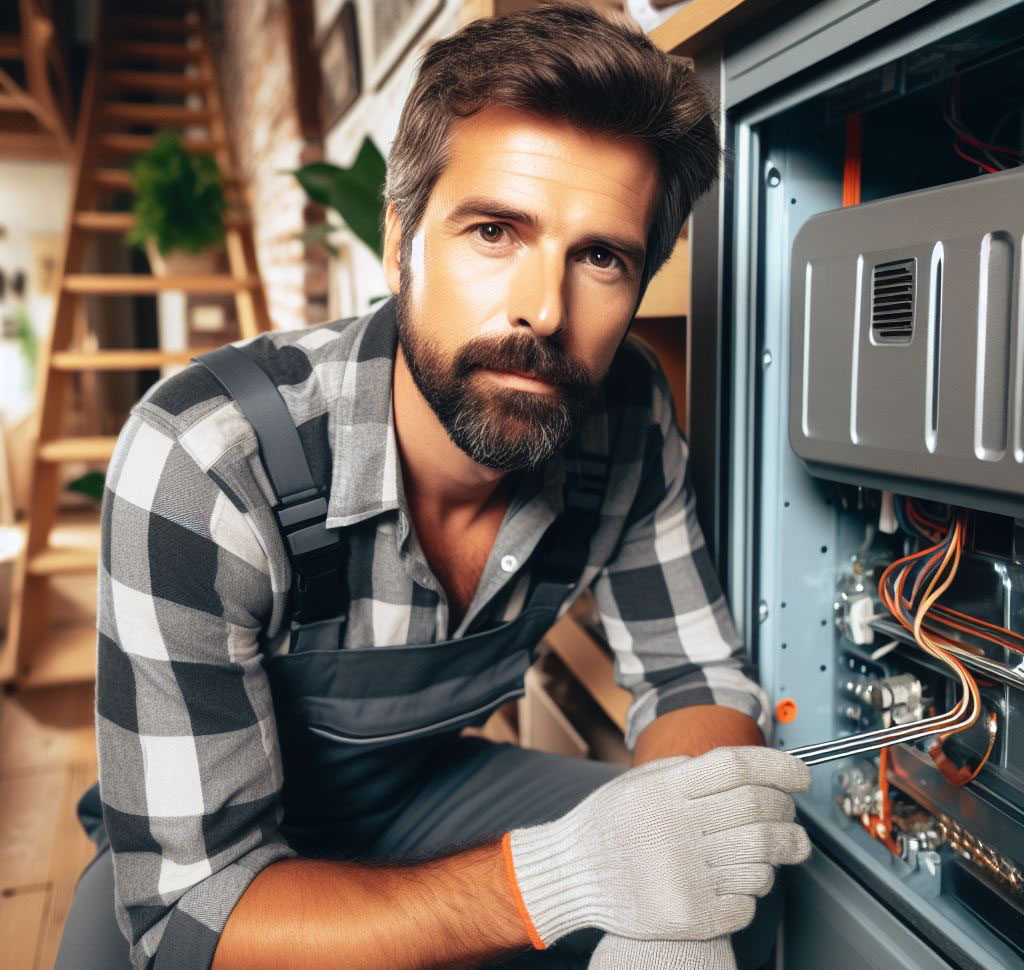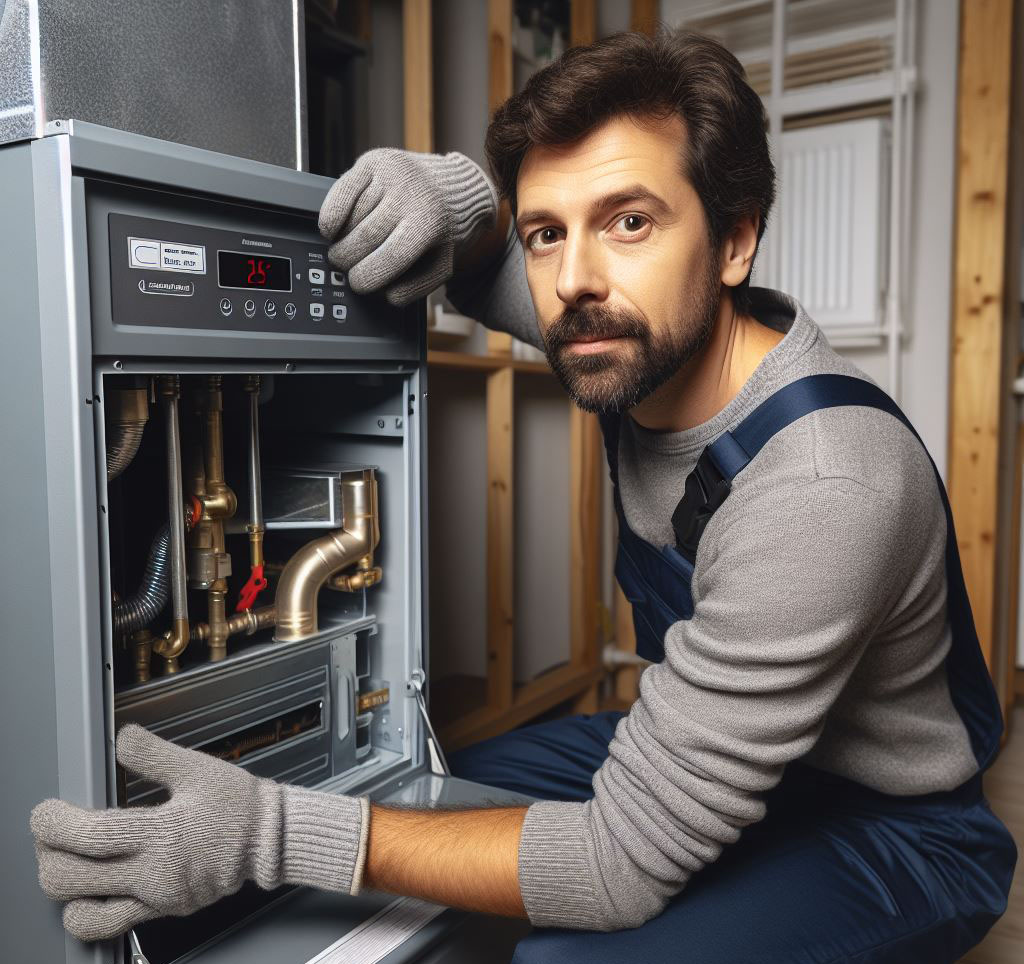A furnace isn’t just a piece of equipment, it’s the linchpin of your home’s comfort during those chilly months. Whether you’re a DIY enthusiast with a knack for tackling home projects or a construction professional who’s seen it all, understanding the intricacies of furnace replacement is crucial. It’s about ensuring a warm, safe, and energy-efficient haven for families to thrive in.

Recognizing the Need for Furnace Replacement
Like the seasoned beams that support a home, a furnace has a lifespan, and recognizing when it’s reaching the end is key. Here’s what to look for:
- Age and Wear: A furnace generally holds its ground for about 15-20 years. Past this point, it’s living on borrowed time, and the wear can lead to inefficiency and potential system failure.
- Repair Frequency: If you’re patching up your furnace more often than you’re changing the oil in your truck, it’s a telltale sign. Constant repairs are costly and a clear indicator that the furnace’s days are numbered.
- Soaring Energy Bills: An old furnace can guzzle fuel like a leaky water heater wastes water. If you notice your heating costs climbing, despite similar usage, it’s a sign of decreasing efficiency.
Understanding efficiency ratings, like AFUE, is akin to knowing the grade of lumber you need for framing a house. A higher AFUE means the furnace converts more fuel to heat, much like better insulation keeps warmth from slipping through the walls.
Delaying a furnace replacement is a gamble with high stakes. It’s not just about comfort, it’s about safety. The risk of carbon monoxide leaks and the certainty of inflated energy costs are the penalties for procrastination.
Planning for Furnace Replacement
Embarking on a furnace replacement starts with a blueprint of considerations:
- Assessing Your Heating Needs: Like choosing the right-sized circuit breaker for your electrical panel, your furnace must be tailored to your home. Consider recent changes, such as additions or improved insulation, which could affect your heating requirements.
- Sizing Up the Situation: Accurate furnace sizing is non-negotiable. It’s the difference between a snugly fitted window and one that lets drafts whistle through. Perform a heat load calculation, or better yet, have a pro do it to ensure your new furnace fits your home’s needs like a glove.
- Budgeting Wisely: Investing in a new furnace is like laying a new foundation—it needs to be done right and with an eye on the future. While upfront costs can be significant, the return on investment comes in the form of lower energy bills and a more comfortable, consistent indoor climate.
Approach furnace replacement with the same diligence you would any major home renovation. It’s a substantial upgrade that demands thorough planning, a clear understanding of your needs, and a well-considered budget. With the right preparation, your new furnace will be a source of warmth and efficiency for years to come.

Selecting the Right Furnace
When the time comes to select a new furnace, it’s akin to choosing a cornerstone for your home’s comfort system. The market offers a variety of furnace types, each with its own set of advantages tailored to different needs and climates.
- Types of Furnaces:
- Gas Furnaces: The most common choice for their efficiency and cost-effectiveness, especially in areas where natural gas is readily available.
- Electric Furnaces: Ideal for areas where electricity costs are low or gas is not available. They are known for their simplicity and long service life.
- Oil Furnaces: Often used where oil is a more economical fuel source. They require a larger on-site storage tank and regular deliveries but can provide powerful heating.
- Furnace Features:
- Variable Speed Blowers: These sophisticated systems adjust the air volume to create consistent temperature control, reduce hot and cold spots, and improve overall efficiency.
- Smart Thermostats: The integration of smart thermostats allows for precise control and monitoring of your heating system, often learning your schedule and adjusting temperatures accordingly.
- Two-Stage Heating: By operating at a lower stage when full power is not needed, these furnaces save energy and provide more even heat distribution.
- Energy Efficiency:
- AFUE Ratings: The Annual Fuel Utilization Efficiency rating is a measure of a furnace’s efficiency in converting fuel to energy. A higher AFUE rating indicates a more efficient furnace, leading to lower utility bills and reduced environmental impact.
Preparing for the Installation
Proper preparation is the foundation of a successful furnace installation. It ensures safety, compliance with local codes, and the longevity of your heating system.
- Safety Considerations and Permits:
- Permits: Securing the proper permits is not only a legal requirement but also a safeguard that the installation will be inspected and meet local building codes.
- Carbon Monoxide Detector: Essential for any home with a combustion appliance, these detectors should be in place to monitor for any dangerous emissions.
- Tools and Materials Checklist:
- Basic Hand Tools: Wrenches, screwdrivers, pliers, and hammers are indispensable for any installation.
- Pipe Wrench: Necessary for securing gas connections without leaks.
- Measuring Tape: Accurate measurements are critical for aligning and fitting the new system.
- Sealants: Properly selected tapes and mastics ensure airtight duct connections.
- Venting Materials: High-quality venting components are crucial for safely directing exhaust gases outside.
- Tips for Removing the Old Furnace:
- Power Down: Always disconnect the power supply before beginning work to avoid electrical hazards.
- Empty the Lines: For condensing furnaces, ensure all water is drained from the lines to prevent spills and damage.
- Systematic Dismantling: Carefully disassemble the old furnace, keeping track of each step, as installation will generally be the reverse process.
- Clean the Area: A clean workspace is essential for a smooth installation and helps prevent future issues with the new system.
The Installation Process
Embarking on the installation of a new furnace is a substantial task that requires a blend of precision and practical know-how. Let’s break down the process into manageable steps, ensuring you can navigate this complex project with confidence.
Step-by-Step Guide:
- Assess and Measure: Begin by accurately assessing the heating needs of your home. A furnace that’s too large or too small can lead to inefficiency and discomfort.
- Removal of the Old Unit: Safely disconnect and dismantle the old furnace. This includes carefully handling the gas or electrical connections and properly disposing of the old unit.
- Prepare the Area: Clean the space thoroughly. Any leftover debris can impede the efficiency and operation of your new furnace.
- Install the New Furnace: Position the new furnace, ensuring it’s level and secure. Connect all ductwork, gas lines, and electrical wiring with meticulous attention to detail.
- Test the Connections: Before firing up the furnace, test all connections for leaks or faults. This is critical for both performance and safety.
Common Pitfalls:
- Incorrect Sizing: A furnace that doesn’t match your home’s requirements can lead to increased wear and operational costs.
- Faulty Installation: Improper connections or venting can lead to dangerous situations, such as gas leaks or carbon monoxide buildup.
- Overlooking Local Codes: Ensure that your installation adheres to all local building and safety codes to avoid legal and safety issues.
When to Call in a Professional:
Consider enlisting a certified HVAC professional if you’re unsure about any aspect of the installation process. Their expertise can be invaluable, and they can ensure that your system is installed safely and efficiently.
Post-Installation
After the installation, your focus should shift to ensuring that your new furnace operates effectively for years to come.
Testing the New Furnace
- Initial Startup: Monitor the furnace’s first start closely. Listen for unusual noises and observe the startup cycle to ensure everything functions as expected.
- Thermostat Calibration: Verify that the thermostat is correctly calibrated with the furnace to maintain optimal home comfort.
Maintenance Tips
- Regular Inspections: Schedule annual inspections by a qualified technician to maintain peak performance.
- Filter Replacements: Regularly replace or clean the air filters to maintain airflow and efficiency.
- Keep Vents Clear: Ensure that all vents and registers are unobstructed to allow for proper air distribution.
Warranty and Service Considerations
- Product Registration: Promptly register your furnace with the manufacturer to activate the warranty.
- Maintain Records: Keep detailed records of maintenance and any repairs for future reference and to support warranty claims.
FAQ Section
Signs that may indicate the need for replacement include frequent breakdowns, increasing energy costs, and inconsistent heating. If your furnace is approaching the end of its expected lifespan, investing in a new, more efficient model may be more economical in the long run.
Installing a furnace requires a comprehensive understanding of HVAC systems, as well as knowledge of local codes and regulations. While a seasoned DIYer might tackle this project, it’s often best to hire a professional to ensure safety and proper installation.
The lifespan of a furnace typically ranges from 15 to 20 years, though this can vary depending on the unit’s make and model, usage patterns, and the regularity of maintenance.
The appropriate furnace size is determined by various factors, including your home’s square footage, insulation quality, climate, and specific heating needs. Performing a heat load calculation is a reliable method for determining the correct size.
Proper disposal of your old furnace is important. Many components can be recycled, and it’s crucial to handle any hazardous materials according to local regulations. Check with your municipality or a professional disposal service for guidance.
